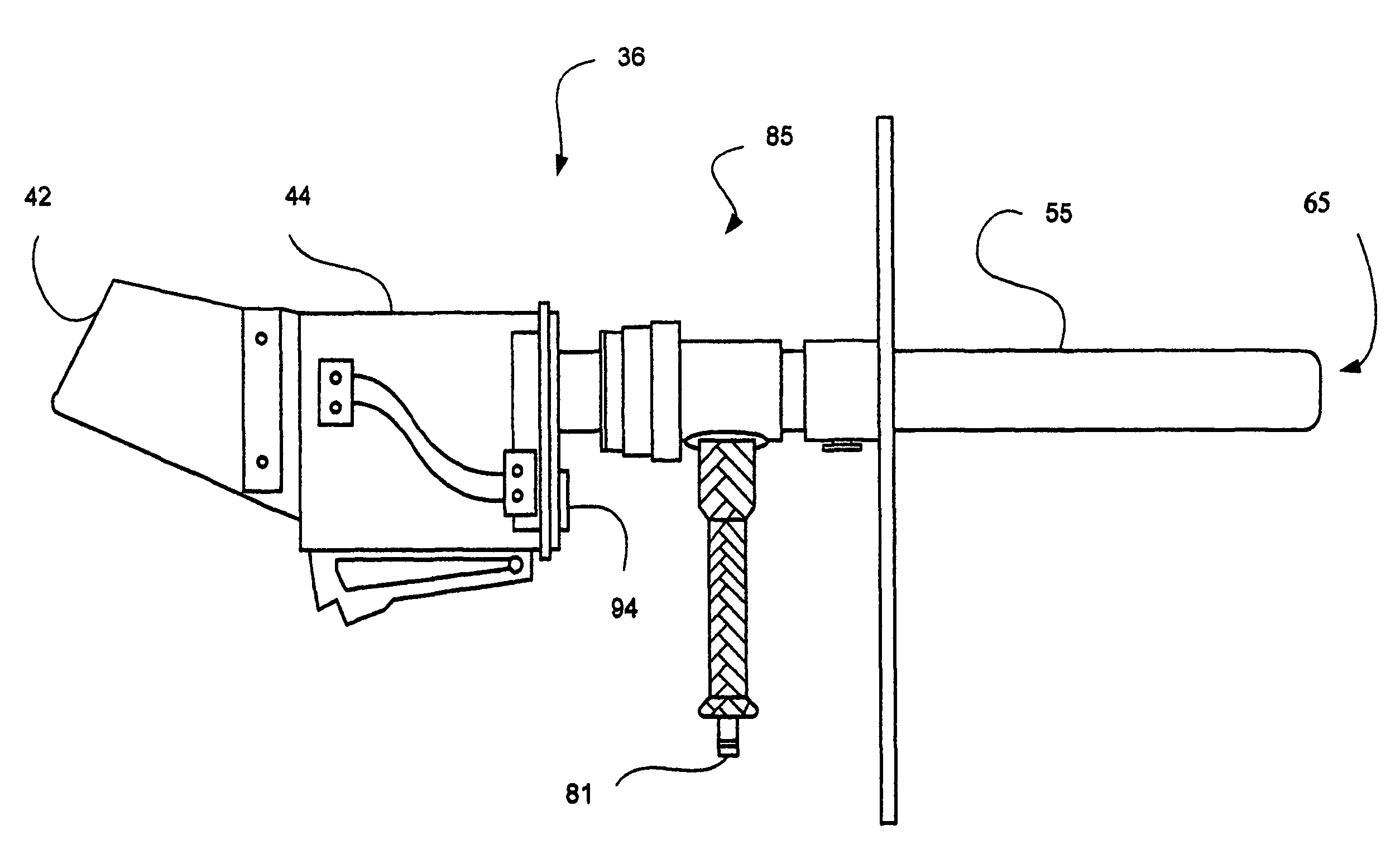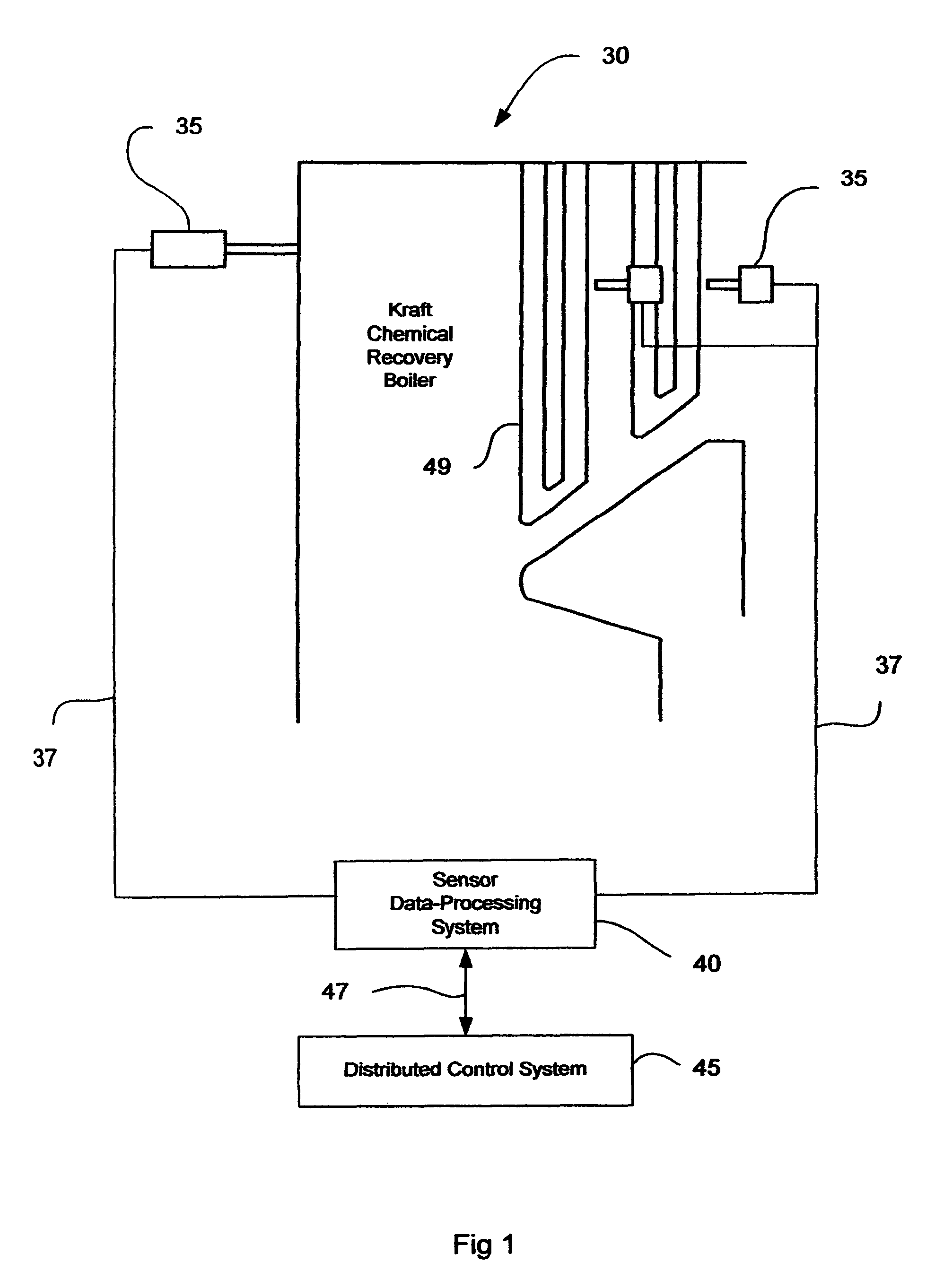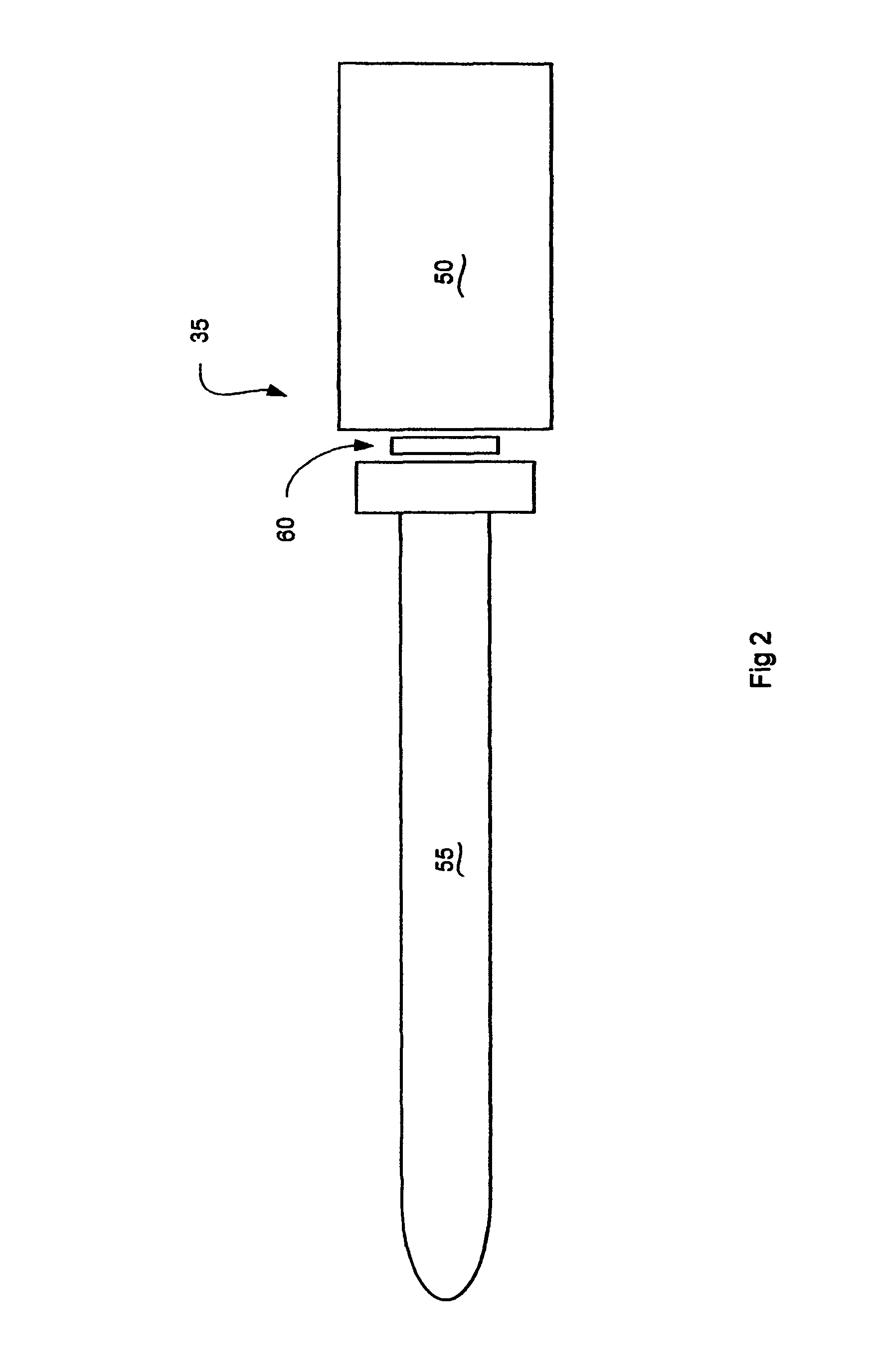Infrared imaging sensor
a sensor and infrared technology, applied in the field of infrared imaging sensors, can solve the problems of large and expensive boilers, limited pulp mill capacity, and difficult economic addition of small incremental units of boiler capacity, and achieve the effect of low cos
- Summary
- Abstract
- Description
- Claims
- Application Information
AI Technical Summary
Benefits of technology
Problems solved by technology
Method used
Image
Examples
Embodiment Construction
[0025]Turning now to the drawings, and more particularly to FIG. 1 thereof, a deposition detection system in accordance with this invention is shown installed in a Kraft recovery boiler 30. The deposition detection system includes one or several monitoring sensors 35, described in detail below, which acquire data in the midband infra-red spectrum within a particular field of view from the interior of the recovery boiler. The monitoring sensors 35 could be fixed in position to permanently monitor particular areas within the boiler, or could be integrated hand-held units 36 shown in FIG. 3.
[0026]The sensor 35, shown in more detail in FIGS. 2 and 5-7, converts the acquired infrared data to electrical signals, which are conducted via electrical lines 37 to a sensor data processing system 40, shown in more detail in FIG. 10 and described in detail below. The hand-held sensor 36 shown in FIG. 3 converts the acquired infrared data directly to an image that is viewed on a display inside a h...
PUM
 Login to View More
Login to View More Abstract
Description
Claims
Application Information
 Login to View More
Login to View More - R&D
- Intellectual Property
- Life Sciences
- Materials
- Tech Scout
- Unparalleled Data Quality
- Higher Quality Content
- 60% Fewer Hallucinations
Browse by: Latest US Patents, China's latest patents, Technical Efficacy Thesaurus, Application Domain, Technology Topic, Popular Technical Reports.
© 2025 PatSnap. All rights reserved.Legal|Privacy policy|Modern Slavery Act Transparency Statement|Sitemap|About US| Contact US: help@patsnap.com



